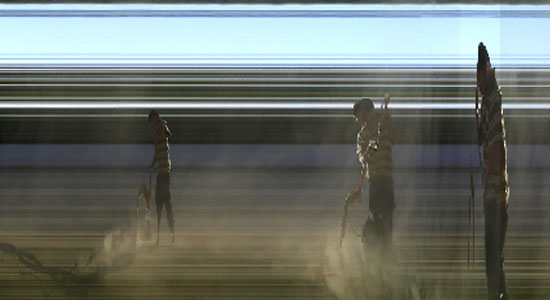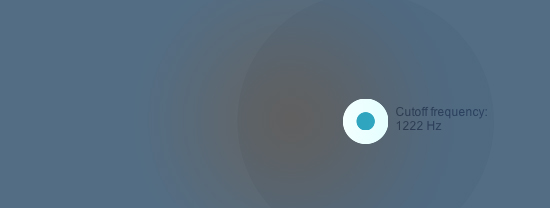A Procedural Drawing Course [Code, Pen, Paper]
Procedural properties are ancient problem solving techniques in communication, art, crafts and all type of human activities. We can see its incarnations in everyday life, from beautiful handmade indian rangolis to formalised design practices, mathematics, geometry, music, architecture and even pure code language. This workshop is dealing with Procedural Drawing. Why procedural?
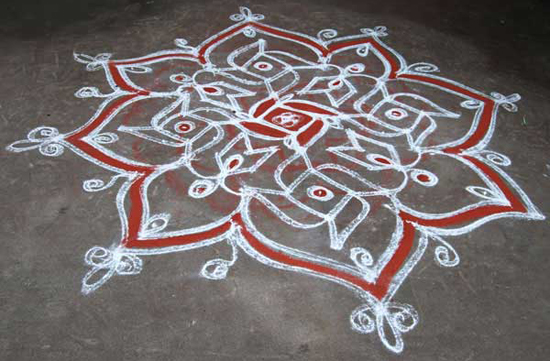
Rangoli, South India
Media and technology has an overwhelming relationship with our cultural society. Stream of events, speed of information sharing growing rapidly, it is hard to catch up with the latest directions of specific areas of tools, art and technology. New social contexts, cultural interactions arise day by day. These days designers should focus and reflect on the here and the now and have an overview on the current methodologies, design practices. We can always learn and adapt new, short term, overhyped technologies, but it is much harder to grasp the underlying phenomenons, ancient design decisions, the human factor. This workshop is about to catch these properties under the hoods.
The language of the workshop is pseudocode. There is no specific type, no predefined syntax, we do not rely on any computers, function libraries, we use only pens, lines, papers, logic, repetition, rules, process. We are following the path that many philosophers, engineers, inventors, mystics have been followed before us: think and draw.
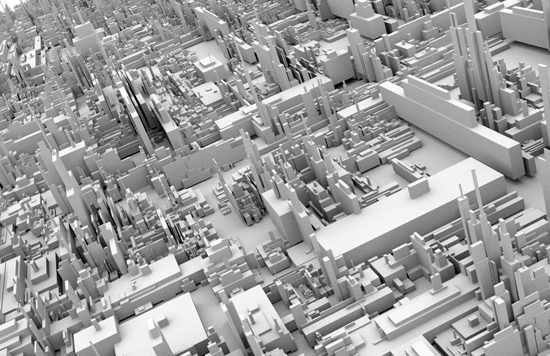
3d L-system made by Sebastien Parody
A very beautiful procedural example is the system made by Aristid Lindenmayer who was trying to describe complex biological and natural growth with a simple set of rules. This system is named after him. He also wrote a really inspiring book on “The Algorithmic Beauty of Plants” (pdf link). He wanted a way to test his theory about the growth pattern of a particular type of algae. His theory stated that the cells of this algae could be in one of two states: growth or reproduction. An algae in the growth state eventually grew into the reproduction state. An algae in the reproduction state eventually divided into two cells, one of which was in the growth state and the other in the reproduction state. Lindenmayer’s grammar system proved a fantastic method for proving his theory. What Lindenmayer could not have predicted is the incredible usefulness of his system in many other areas, both in biology and in mathematics.
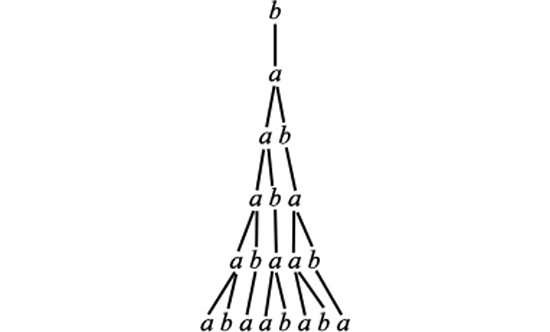
Basic Diagram of the Lindenmayer System
A Lindenmayer grammar is fully defined by an initial axiom and a set of one or more transformation rules. The initial axiom consists of a “string” of characters (e.g., alphabetic letters, punctuation, etc.). Each transformation rule gives a set of characters to search for in an axiom, and a set of characters to replace the original characters with. Applying all of the transformation rules to the initial axiom produces a new axiom. The rules can then be applied to this second axiom to produce a third axiom. Applying the rules to the third axiom produces the fourth, and so on. Each application of the transformation rules is called an iteration of the grammar.
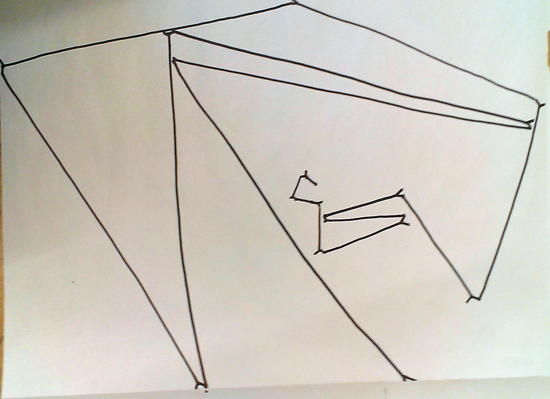
Pen Drawing from the Course: Marcell Torok gave instructions to synchronize your length of line with the time you are breathing in and breathing out
Another interesting aspect of procedural, algorithmic thinking is something that we can call the “stage-analogy”. As Rohid Gupta (Fadereu) refers to the analogies between stage, performance & programming: “As much as our machines, we have become the processors of information, but we do not read text and instructions line by line as computers do. We scan in less than a blink and get an overall visual sensory pattern - like the notes in a musical chord, or the Fourier Transform of a rich spectral signal from atomic emission, we break it down in a subconscious way.” Actors, performers are acting based on predefined set of rules, be it improvisational or fully, “strictly” followed algorithms.
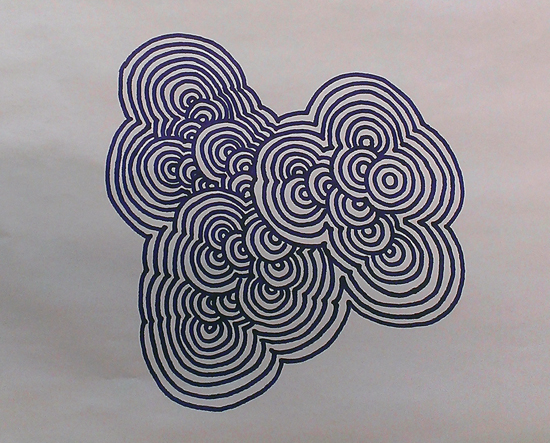
Pen Drawing from the Course: Attila Somos was experimenting on how to formalize & define recursion
Visual arts started to adapt these concepts with the rising of the Dada movement in first decades of the twentieth century: artists, performers were giving instructions, pseudo codes for the interpreting (compiling) their piece. Like musical notations, which are originally interfaces for representing different events that are distributed in time, drawings, visual arts also reached a state where the liveness or the actual “happening” of the concept is separated from the thoughts aka the software. Fluxus in the sixties, conceptual artists, Sol Lewitt, Miklos Erdely with his creative drawing workshops and conceptual works also continued the tradition.
This tradition is widely used and democratized today, since we are working with software separated from hardware, we can find this concept embed very deep in our everyday life. You can see all the works (rules are in hungarian) from the course here. The workshop was held at MOME Media Design, 2013.
SlitScan_JS [Webcam, ProcessingJS]
Slitscan, or “slit-scan photography” refers to cameras that use a slit, which is particularly used in scanning cameras in panoramic photography. It has many implementations with different hardware & software languages among many artistic and technological contexts. As I am currently working on a project that is involved some aspects of this technique (but extended into something totally unusual and strange, bit more about it later…), I just hooked together a quick hack of the recently introduced media API for users webcam and microphones and combine it with processingjs to make life easier.
In fact the getUserMedia() query can be used in a lot wider context than only within this example. Since we can access all pixels within the live video feed using javascript, it is becoming lot easier to build motion tracking, color tracking and other computer vision based sensing technologies for plugin free, open web based applications. Here it is a really simple example which is calling the loadPixels() function of processing so each pixel can be set and replaced within the image. As a simple result we are placing ellipses with the corresponding color values of the pixels on the screen.
You can try out the working demo (tested & working with Google Chrome)
Grab the source from Github
PolySample [Pure Data]
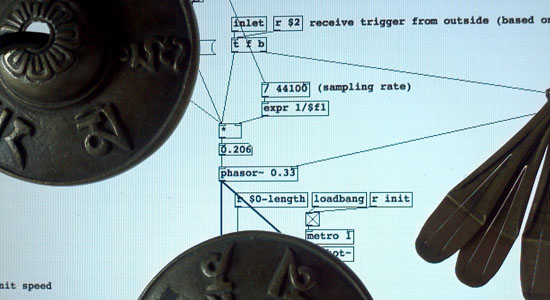
I’ve been involved in a few projects recently where simultaneous multiple sound playback was needed. Working in the projects Syntonyms ( with Abris Gryllus and Marton Andras Juhasz ), SphereTones ( with Binaura ), and No Distance No Contact ( with Szovetseg39 ) repeatedly brought me the concept of playing overlapping sound samples. This means when you need to playback a sample and start playing it back again, before the previous instance has been finished. The Pure Data musical environment is really useful for low level sound manipulation, can be tweaked towards specific directions. I was searching the web for some solutions, but still didn’t find a really simple polyphonic sound sampler with adjustable pitch that is capable to play back multiple instances of the same sound if needed. For instance if you need to play long, resonating, vibrating sounds, it is useful to let the playback of the previous one finishing, so the next sound doesn’t interrupt it, but there are two instances of the same sound, both of them left decaying smooth & clear. Like raindrops or percussions, etc.
As a starting point I found myself again in the territories of dynamic patching. As you see on the video ( which is an older pd experiment of mine ) there are things that can be left to pd itself. Creating, deleting, connecting objects can be done quite easily by sending messages to pd itself. With PolySample, once the user creates a [createpoly] object, it automatically creates several samplers in itself. The number of generated samplers can be given as a second argument to the object. First argument is the name of the sound file to be played back. There is an optional third argument for changing the sampling rate ( which is 44100 by default ). It is useful when working with libPd and the like, where different devices and tablets operate on a lower sampling rate. So creating a sampler can be invoked as
[ createPoly < sound filename > < numberOfPolyphony > < sample rate > ]
The first inlet of the object accepts a list: the first element is the pitch, the second element is the volume of the actual sample to be played. This is useful when trying to mimic string instruments or really dynamic range of samples. This volume sets the initial volume of each sample ( within the polyphony ), whereas the second inlet accepts a float for controlling the overall sound, as a mixer.
You can create as many polyphonic samplers as you wish ( keep in mind that smaller processors can be freaked out quite quickly if you create tons of sample buffers at the same time ). The project is available at Github, here.
Built with Pd Vanilla, should work with libPd, webPd, RJDJ and other embeddable Pd projects.
Javascript Sound Experiments - Spectrum Visualization [ProcessingJS + WebAudio]
This entry is just a quick add-on for my ongoing sound related project that maybe worth sharing. I came up with the need of visualizing sound spectrum. You might find a dozen of tutorials on the topic, but I didn’t think that it is so easy to do with processingJS & Chrome’s WebAudio Api. I found a brilliant and simple guide on the web audio analyser node here . This is about to make the visuals with native canvas animation technique. I used the few functions from this tutorial and made a processingJS port of it. The structure of the system is similar to my previous post on filtering:
1. Load & playback the sound file with AudioContext (javascript)
2. Use a function to bridge native javascript to processingJS (pass the spectrum data as an array)
3. Visualize the result on the canvas
Load & playback the sound file with AudioContext (javascript)
We are using a simpler version of audio cooking within this session compared to the previous post. The SoundManager.js file simply prepares our audio context, loads and plays the specified sound file once the following functions are called:
initSounds();
startSound('ShortWave.mp3');
We call these functions when the document is loaded. That is all about sound playback, now we have the raw audio data in the speakers, let’s analyze it.
Use a function to bridge native javascript to processingJS
There is a function to pass the spectrum data as an array, placed in the head section of our index.html:
function getSpektra()
{
// New typed array for the raw frequency data
var freqData = new Uint8Array(analyser.frequencyBinCount);
// Put the raw frequency into the newly created array
analyser.getByteFrequencyData(freqData);
var pjs = Processing.getInstanceById('Spectrum');
if(pjs!=null)
{
pjs.drawSpektra(freqData);
}
}
This function is based on the built-in analyzer that can be used with the WebAudio API. the “freqData” object is an array that will contain all the spectral information we need (1024 spectral bins by default) to be used later on. To find out more on the background of spectrum analysis, such as Fourier transformation, spectral bins, and other spectrum-related terms, Wikipedia has a brief introduction.
However we don’t need to know too much about the detailed backgrounds. In our array, the numbers are representing the energy of the sounds from the lowest pitch to the highest pitch in 1024 discrete steps, all the time we call this function (it is a linear spectral distribution by default). We use this array and pass to our processing sketch within the getSpectra() function.
Visualize the result on the canvas
From within the processing code, we can call this method any time we need. We just have to create a JavaScript interface to be able to call any function outside of our sketch (as shown in the previous post, also):
interface JavaScript
{
void getSpektra();
}
// make the connection (passing as the parameter) with javascript
void bindJavascript(JavaScript js)
{
javascript = js;
}
// instantiate javascript interface
JavaScript javascript;
That is all. Now we can use our array that contains all the spectral information by calling the getSpectra() function from our sketch:
// error checking
if(javascript!=null)
{
// control function for sound analysis
javascript.getSpektra();
}
We do it in the draw function. The getSpectra() is passing the array to processing in every frame, so we can create our realtime visualization:
// function to use the analyzed array
void drawSpektra(int[] sp)
{
// your nice visualization comes here...
fill(0);
for (int i=0; i<sp.length; i++)
{
rect(i,height-30,width/sp.length,-sp[i]/2);
}
}
As usual, you can download the whole source code from here as well as try out before using it with the live demo here. Please note, the demo currently works with the latest stable version of Google Chrome.
Javascript Sound Experiments - Filtering [ProcessingJS + WebAudio]
I am working on a sound installation project where we are building our custom devices to measure distance (using wireless radiofrequency technology) & create sounds (using DAC integrated circuits with SD card storage, connected to a custom built analogue filter modul) through simple electronic devices. The building of the hardware with Marton Andras Juhasz is really exciting and inspirative in itself, not to mention the conceptual framework of the whole project. More hardware related details are coming soon, the current state is indicated on the video below:
The scope of this entry is about to represent filtered audio online, natively in the browser. I have to build an online representation of the system where the analog hardware modules can be seen and tried out within a simplified visualization (that is mainly to indicate the distances between the nodes in the system). Apart from the visualization, sound is playing a key role in the online representation, so I started playing with the Web Audio API , where a simple sound playback can be extended with filtering, effecting using audio graphs. The state of web audio might seem a bit confusing at the moment (support, browsers compatibility etc). To minimize confusion, you can read more about the Web Audio API here.One is for sure: the context of web audio is controlled via JavaScript, so it can fit well into any project that is using high level JavaScript drawing libraries, such as ProcessingJS.
The basic structure that we do here is
1. Load & playback soundfiles
2. Display information, create visual interface
3. Use control data from the interface and drive the parameters of the sounds
Load & Playback soundfiles
I found a really interesting collection of web audio resources here that are dealing with asynchronous loading of audio, preparing their content for further processing by storing them in buffers. Sound loading and storing in buffers is all handled with the attached Javascript files. If you need to switch sounds later, you can do it asynchronuously by calling the loadBufferForSource(source to load, filename) anytime anywhere on your page.
Display Information, create visual interface
Connecting your processingjs sketch to the website can be done by following this excellent tutorial. You should make functions in your Javascript that are “listening” to processingjs events. You can call any function that can accept any parameters. One important thing is that you have to actually connect the two systems by instantiating a processingjs object as the following snippet shows:
var bound = false;
function bindJavascript()
{
var pjs = Processing.getInstanceById('c');
if(pjs!=null)
{
pjs.bindJavascript(this);
bound = true;
}
if(!bound) setTimeout(bindJavascript, 250);
}
bindJavascript();
We have some work to do in the processingjs side, also:
// create javascript interface for communication with functions that are "outside"
// of processingjs
interface JavaScript
{
void getPointerValues(float x, float y);
void getFilterValues(float filter1, float filter2);
void getGainValues(float gain1, float gain2);
}
// make the connection (passing as the parameter) with javascript
void bindJavascript(JavaScript js)
{
javascript = js;
}
// instantiate javascript interface
JavaScript javascript;
Use control data from the interface and drive the parameters of the sounds
After connecting the html page with our sketch it is possible to use any action in the sketch to control our previously loaded sounds. This way we separate the whole audio engine (handling, storing, etc) from the visual interface (the processingjs canvas with rich interactive contents) by linking the two with a few functions to pass some parameters. These binding functions might remind someone to the OSC way of connecting of two softwares where functionalities are staying clearly isolated within the different systems, only the parameters are traveling between them represented as numbers, labels or other types of symbols.
This example at the moment works only with Chrome (new stable releases). According to the developer docs it should work with the new Safari (WebKit) browser but I couldn’t make it. Hope this will be fixed soon…
Try out the LIVE DEMO (you need latest stable Google Chrome
)
Download full source code (zip) from here

